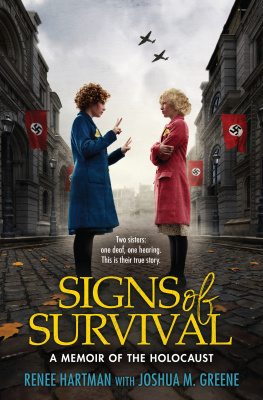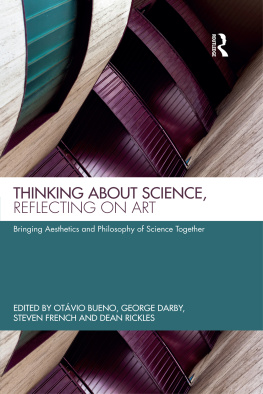abbreviations
Parenthetical citations of the following works are abbreviated after first use.
| AI | Alfred North Whitehead, Adventures of Ideas |
| AP | Lambert Wiesing, Artificial Presence |
| A/V | Gilles Deleuze, The Actual and the Virtual |
| BS | Immanuel Kant, Observations on the Feeling of the Beautiful and the Sublime |
| C | Flix Guattari, Chaosmosis |
| C1 | Gilles Deleuze, Cinema 1: The Movement Image |
| C2 | Gilles Deleuze, Cinema 2: The Time-Image |
| CJ | Immanuel Kant, The Critique of Judgment |
| CN | Alfred North Whitehead, The Concept of Nature |
| CL | Roland Barthes, Camera Lucida |
| CMF | M. M. Bakhtin, Supplement: The Problem of Content, Material, and Form in Verbal Art |
| DR | Gilles Deleuze, Difference and Repetition |
| F | Gilles Deleuze, The Fold |
| GI | Jean-Luc Nancy, The Ground of the Image |
| LS | Gilles Deleuze, The Logic of Sense |
| PP | Vilm Flusser, Towards a Philosophy of Photography |
| PR | Alfred North Whitehead, Process and Reality |
| TE | Flix Guattari, The Three Ecologies |
| TP | Gilles Deleuze and Flix Guattari, A Thousand Plateaus |
| UTI | Vilm Flusser, Into the Universe of Technical Images |
| WC | Steven Shaviro, Without Criteria |
| WP | Gilles Deleuze and Flix Guattari, What Is Philosophy? |
acknowledgments
The larger part of this book was written during a sabbatical leave from Wayne State Universityfor which I was and remain grateful. Additional material support was provided by the English Department at Wayne State University, which granted me a Josephine Nevins Keal Fellowship during the summer of 2012. My thanks extend to Hilary Ratner, the vice president for research, and Wayne Raskind, dean of the College of Liberal Arts and Sciences, also at Wayne State University, for support toward copyright fees, the color insert, and the preparation of an index. Many, many thanks to Richard Pult, my editor at UPNE, who has, simply, been great throughout. Finally, I wish to express my sincere gratitude to the many artists who have allowed me to reproduce their work, often without requesting a copyright fee, and several for providing me with the images themselves.
These are the easier thank-yous. Much harder to define and to articulate is my indebtedness to the individuals, objects, and circumstances that, over the years, inspired my thinking and eventually compelled me to write this book. Some of these influences are too elusive to be traced. Others stand out, so I will forgo any attempt to be inclusive and mention only the most immediate objects of my gratitude. In the first place, I wish to express my thankfulness to amazing artist and my life partner Iris Eichenberg, who, besides much else, not only taught me to look (at art and at other things), but also forced me to write about what I saw, thus enabling me to find a voice I did not know I might have. Thank you, Konstantina Karageorgos, Susan Bernstein, Deb Al-Najjar, and Heather McGill, for the joys of your friendship and the delights of your agile minds. Three of my friends and colleagues in the English Department at Wayne StateSteven Shaviro, Scott Richmond, and Jonathan Flatleyhave been great interlocutors over the past few years and lovely supporters in many other ways as well. My dear friend and colleague Kathryne V. Lindberg was there for me, in her myriad singular ways, when I first arrived in Detroit. I can only express my profoundest regret that she no longer is. Many other colleagues and, indeed, so many of my students at Wayne, especially the grad students in my Comparative Media seminar on The Image, have helped me along in a variety of waysmy thanks to you all. Finally, I am grateful to Herman, Fritz, and Otto, for their alterity, their love, and their companionship.
I dedicate this book to Marijke Smalbraak, my all-time mentor and longtime
beloved friend, without whose beautiful mind, generosity, integrity, and care, I would have done little worth (my) whilescholarly and otherwise.
* * *
Earlier versions of a portion of the introduction appeared in Teaching Visual Culture in an Interdisciplinary Classroom: Feminist (Re)Interpretations of the Field, edited by Elbieta H. Oleksy and Dorota Golaska (Utrecht: ZuidamUithof Drukkerijen, 2009). A shorter version of chapter 6 appeared in Wide Screen 4.1 (2012). An early version of part of the conclusion originally appeared in The Matter of Culture: Aesthetic Experiences and Corporeal Being, Mosaic: A Journal for the Interdisciplinary Study of Literature 36.3 (2003).
bibliography
Alliez, Eric, and Andre Goffey, eds. The Guattari Effect. London: Continuum, 2011.
Armstrong, Isobel. The Radical Aesthetic. Oxford: Blackwell Publishers, 2000.
Arte.Sales. Johan van der Keuken. http://sales.arte.tv/detailFiche.action?programId=1020. Accessed January 18, 2012.
Badiou, Alain. La clameur de ltre. Paris: Hachette, 1997.
. Court trait dontologie transitoire. Paris: Seuil, 1998.
. The Event in Deleuze. Translated by Jon Roffe. Parrhesia: A Journal of Critical Philosophy. http://www.lacan.com/baddel.htm. Accessed May 27, 2012.
Bakhtin, M. M. Supplement: The Problem of Content, Material, and Form in Verbal Art. In Art and Answerability: Early Philosophical Essays by M. M. Bakhtin. Edited by Michael Holquist and Vadim Liapunov. Translated by Vadim Liapunov. Supplement translated by Kenneth Brostrom. Austin: University of Texas Press, 1990.
Bal, Mieke. Narrative Inside Out: Louise Bourgeois Spider as Theoretical Object. Oxford Art Journal 22.2 (1999): 10326.
Bal, Mieke, and Norman Bryson. Looking In: The Art of Viewing. London: Routledge, 2001.
Barnes, Richard. Animal Logic. New York: Princeton Architectural Press, 2009.
Barthes, Roland. Camera Lucida: Reflections on Photography. Translated by Richard Howard. New York: Hill and Wang, 1981.
. The Great Family of Man. In Mythologies. Translated by Annette Lavers. New York: Hill and Wang, 1972, 100102.
. The Photographic Message. In A Barthes Reader. Edited and with an introduction by Susan Sontag. New York: Hill and Wang, 1982, 194210.
Bataille, Georges. Informe. In Documents 1 (Paris 1929). Rpt. in Georges Bataille, Vision of Excess: Selected Writings, 19271939. Translated by Allan Stoekl, with Carl R. Lovitt and Donald M. Leslie Jr. Minneapolis: University of Minnesota Press, 1985, 31.
Batchen, Geoffrey. Each Wild Idea: Writing Photography History. Cambridge, Mass.: MIT Press, 2002.
Baudelaire, Charles. The Salon of 1859. Translated by Jonathan Mayne. In Photography in Print, ed. Vicki Goldberg. Albuquerque: University of New Mexico Press, 1988, 12326.
Baudrillard, Jean. Simulacra and Simulation. Translated by Sheila Faria Glaser. Ann Arbor: University of Michigan Press, 1994.
Beasley-Murray, Jon. Rearguard Action. Radical Philosophy 111 (2002): 5153.
Beckley, Bill, with David Shapiro, eds. Uncontrollable Beauty: Toward a New Aesthetics. New York: Allworth Press, 1998.
Bell, Daniel. The End of Ideology: On the Exhaustion of Political Ideas in the Fifties. 2nd ed. Cambridge, Mass.: Harvard University Press, 2000.
Benjamin, Walter. Little History of Photography. In
Next page








